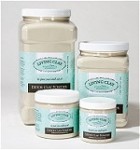 Summer is upon us! In addition to our enjoyment, we have learned to fear it. That’s because insects are more prevalent; they love us; they love our pets; and they might bring us an unwelcome dose of Lyme Disease, Powassan, West Nile virus, or Zika. It’s important to cover the body with light clothing and to wear scarves and hats when working or walking in wooded areas. It’s also time to compare insect repellents which are commercial poisons and those which are organic to see which ones work best. Some are oils; some are sprays. The Consumer Reports Buying Guide gives excellent descriptions of several products.
Summer is upon us! In addition to our enjoyment, we have learned to fear it. That’s because insects are more prevalent; they love us; they love our pets; and they might bring us an unwelcome dose of Lyme Disease, Powassan, West Nile virus, or Zika. It’s important to cover the body with light clothing and to wear scarves and hats when working or walking in wooded areas. It’s also time to compare insect repellents which are commercial poisons and those which are organic to see which ones work best. Some are oils; some are sprays. The Consumer Reports Buying Guide gives excellent descriptions of several products.
I’ll share the link in a moment; but, first, let’s see what their ratings mean.
Consumer Report Ratings
“Our ratings identify which products work best against mosquitoes and ticks. (We no longer test our products against ticks, but past test results and our research indicate that any product that protects you from mosquito bites is also likely to protect you from tick bites.)
Choosing the right repellent matters: Our top products provided several hours of protection, and some of our lowest-scoring ones failed in as little as 30 minutes…..”
How Consumer Reports Tests Insect Repellents.
“We begin our insect repellent tests by applying a standard dose of repellent to a measured area of skin on our test subjects’ arms. (The standard dose is determined from the EPA product testing guidelines.)….”
After they do that, brave volunteers stick their arms into cages of insects to see what happens. (Details are found on the link below.) That helps determine whether products work, how well, and for how long.
Insect Repellent Ingredients Which Work
In terms of the effectiveness of repellents and their safety, you must choose the best active ingredient and correct amount of concentration. More of something is not always better.
The ingredients which performed best contained one of the following three active ingredients, all of which are safe, including for pregnant women, when used as directed. You should avoid repellents with more than 30 percent deet “and not use these products (or any insect repellents) at all on babies younger than 2 months.”
- deet (N,N-diethyl-meta-toluamide)
- oil of lemon eucalyptus (a refined version of a naturally occurring compound, extracted from the gum eucalyptus tree)
- picaridin (a synthetic repellent modeled after a compound that occurs naturally in the black pepper plant).
You can learn much more on their Buying Guide link. For the sake of brevity, I included just the top 3 products they recommend. You can learn much more about each of them and can see all of those they researched by clicking on the link I’ve given you.
I do want to add their words of caution:
Be Wary of ‘Natural’ Repellents
Several makers of “natural” insect repellents (which typically contain essential plant oils such as cedar, citronella, lemongrass, and rosemary) claim that their products can help ward off mosquitoes, including those that carry the Zika virus. But our tests show that these active ingredients aren’t very effective.
How To Apply Insect Repellents
Consumer Reports does describe methods of applying insect repellents, mentions various brands, and talks about the levels of concentration of key ingredients. I hope you will read all of it. But, before I go, I want to mention two other things that have helped me with bug bites. (I live in the woods and have pets, so my experience is considerable.)
Uh Oh! It’s Too Late! You’ve Already Been Bitten! What Now?
Again, for brevity’s sake, I’m just going to list some things and, for the most part, let you use “the Google machine” to research them.
- AfterBite (“The Itch Eraser)
- Tea Tree Oil (an antiseptic with healing and cleansing properties)
- Benadryl – cooling relief for outdoor itches and spider bites
- Cortizone 10
- Burt’s Bees Bug Bite Relief and Repellent
Many antihistamines are now available over the counter. Since they are similar in effectiveness, your choice of product can depend on brand preferences and tolerance for side effects. From most to least sedating, these products include diphenhydramine (Benadryl)), cetirizine (Zyrtec), loratadine (Claritin), and fexofenadine (Allegra). Keep in mind that Benadryl must be taken every six hours to be effective. The other products provide 24-hour relief. ~ UW News
In addition, I use Sea Breeze (an antiseptic with many uses for skin and hair) for treating all kinds of bites and other issues.
 Further, clay will help take the poisons of bites out of your system. It also removes toxins, metals, bacteria, and viruses. It is a Godsend. If you get the purest calcium bentonite clay, you can drink it. But, you also can make a clay pack or poultice; cover it with gauze and a bandage, and it will work to extract unhealthy things from your body. Read more here.
Further, clay will help take the poisons of bites out of your system. It also removes toxins, metals, bacteria, and viruses. It is a Godsend. If you get the purest calcium bentonite clay, you can drink it. But, you also can make a clay pack or poultice; cover it with gauze and a bandage, and it will work to extract unhealthy things from your body. Read more here.
Don’t Forget To Protect Your Pets!

Consult with your veterinarians to see what they recommend for protection in your area.
About That Lyme Disease
Incidentally, I contracted Lyme Disease, from which I’ve made a great recovery. To learn more about some of the things I did to help myself, Click Here.
Let’s Get Well, Stay Well, and Live Well Together Now!
